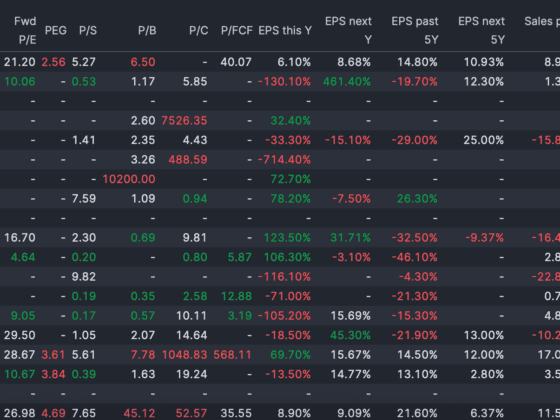Sharing personal experiences can make the concepts discussed more relatable and memorable. Here are a few anecdotes from our investing journeys:
If you haven’t read Investing in Turbulent Markets: How to Navigate Volatility Like a Pro – Part 1 yet – read it here
Learning from the 2008 Financial Crisis
During the 2008 financial crisis, many investors panicked and sold their assets at a loss. However, those who stayed invested and followed their plans saw significant gains in the following years. One of our colleagues, Sarah, shares her experience:
“In 2008, I watched my portfolio lose nearly 40% of its value. It was terrifying, and I was tempted to sell everything and cut my losses. But I remembered the advice of my mentor: ‘Stay the course.’ I continued to invest regularly, even when it felt like throwing good money after bad. By 2013, my portfolio had not only recovered but had grown significantly. That experience taught me the importance of patience and sticking to a well-thought-out investment strategy.”
The Power of Diversification
John, another seasoned investor in our group, emphasizes the importance of diversification with his story:
“In the early 2000s, I had a heavily weighted tech stocks portfolio. When the dot-com bubble burst, I lost most of my investments. That painful lesson taught me the value of diversification. I began spreading my investments across various sectors, including healthcare, energy, and consumer goods. This approach has helped stabilize my returns and reduce the impact of sector-specific downturns.”
Dollar-Cost Averaging in Action
Michael, a proponent of dollar-cost averaging, shares how this strategy helped him navigate market volatility:
“In 2016, the market experienced significant volatility due to political uncertainty. Instead of trying to time the market, I stuck to my dollar-cost averaging plan, investing a fixed monthly amount. While it was difficult to watch my investments fluctuate, the strategy paid off. By the end of the year, my average cost per share was lower, and my portfolio had grown. Dollar-cost averaging helped me stay disciplined and avoid emotional decision-making.”
Actionable Tips for Navigating Volatility
Here are some practical tips to help you navigate market turbulence effectively:
1. Build an Emergency Fund
Before investing, ensure you have an emergency fund that covers at least three to six months of living expenses. This fund acts as a financial safety net, allowing you to avoid tapping into your investments during emergencies.
2. Avoid Over-Leveraging
Using leverage can amplify your gains, but it also increases your risk. Avoid over-leveraging your investments, especially during volatile markets, to protect yourself from significant losses.
3. Keep Emotions in Check
Emotional decision-making can lead to poor investment choices. Practice mindfulness and maintain a rational perspective when evaluating market movements.
4. Set Stop-Loss Orders
Stop-loss orders can help protect your investments by automatically selling a security when it reaches a predetermined price. This strategy can limit your losses during market downturns.

5. Rebalance Your Portfolio
Review and rebalance your portfolio to align with your risk tolerance and investment goals. Rebalancing involves adjusting the allocation of your assets to maintain your desired level of risk.
6. Invest in Defensive Stocks
During turbulent times, consider increasing your allocation to defensive stocks. These companies are more resilient during economic downturns and provide stable returns.
7. Take Advantage of Tax-Loss Harvesting
If you have investments that have lost value, consider selling them to realize a capital loss
You can use these losses to offset capital gains from other investments, potentially reducing your tax liability. Tax-loss harvesting can help improve your after-tax returns, making it a valuable strategy during periods of market volatility.
8. Stay Disciplined with Your Investment Plan
Having a well-defined investment plan is essential, especially during turbulent times. Stick to your plan and avoid making impulsive decisions based on short-term market movements. Remember your long-term goals and the strategies you’ve set to achieve them.
9. Educate Yourself Continuously
The financial markets constantly evolve, and staying educated is crucial for successful investing. Read books, attend seminars, follow reputable financial news sources, and consider joining investment communities. The more you know, the better equipped you’ll be to navigate market volatility.
10. Practice Patience and Perseverance
Market turbulence can test your patience and resolve. Remember that investing is a marathon, not a sprint. Stay focused on your long-term goals, and don’t let short-term market fluctuations derail your investment strategy.
Navigating turbulent markets requires knowledge, strategy, and emotional discipline. By understanding the importance of budgeting, diversifying your portfolio, focusing on quality investments, and maintaining a long-term perspective, you can turn market volatility into an opportunity rather than a setback. Remember, the key to successful investing lies in staying informed, disciplined, and patient.
Reflecting on our decades of experience in trading and investing, we’ve seen that the most successful investors stay the course and maintain a well-thought-out strategy. Markets will always experience ups and downs, but with the right approach, you can navigate these fluctuations and achieve your financial goals.
Ready to take control of your investments and navigate market volatility like a pro? Start by assessing your current portfolio and creating a solid investment plan. Stay informed, stay disciplined, and remember to keep a long-term perspective. Join our investment community today for more tips, resources, and support on your investing journey.







